Rosa rugosa
I love roses, I really do.
But every so often, as I’m battling a stupid black spot infection, I start to think about ripping all my roses out and planting something easier. Maybe some pretty sedges or a handful of ornamental alliums.
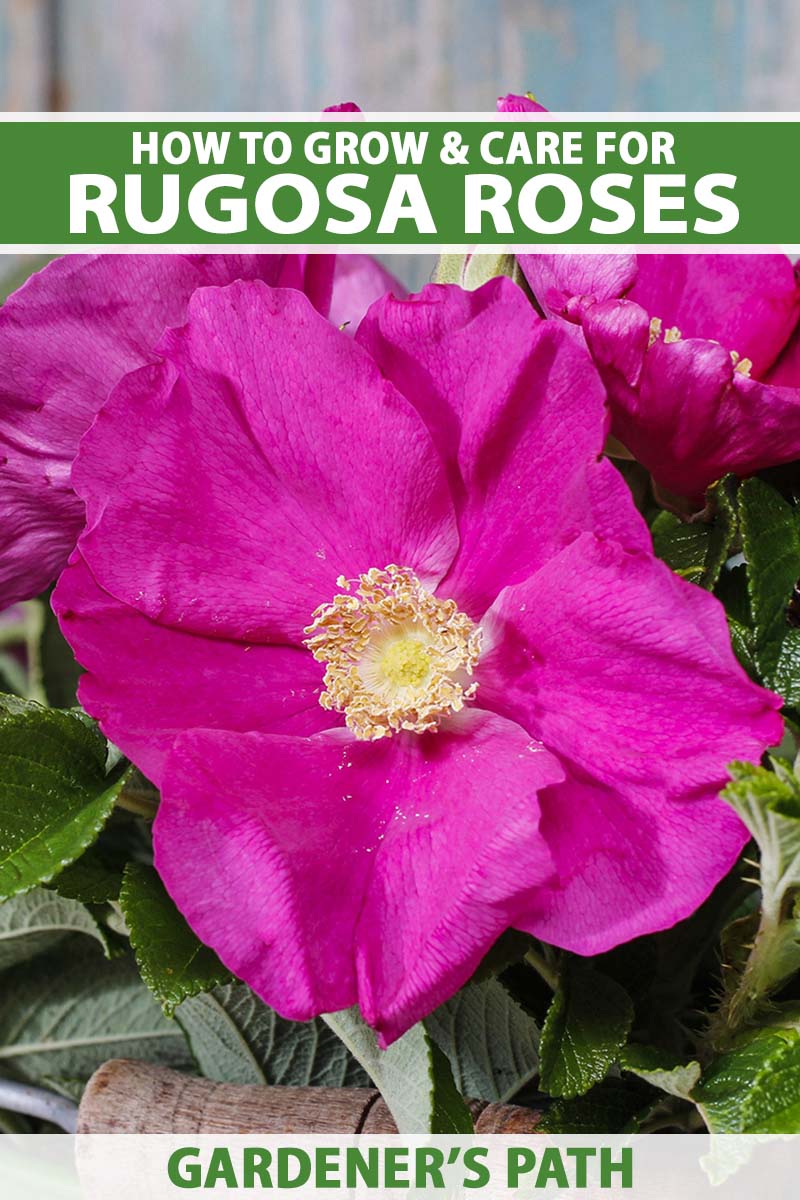
We link to vendors to help you find relevant products. If you buy from one of our links, we may earn a commission.
But then I see and smell those gorgeous flowers, and I decide to keep pushing on. And to try out rugosa roses. These beauties can be every bit as visually appealing as the more fussy types, but they’re incredibly tough and disease-resistant.
Do you live in an area that gets exceptionally cold and figured roses weren’t going to be a part of your life? Are you constantly dealing with powdery mildew? Swear you’ll scream if you see one more rose aphid? Rugosa, rugosa, rugosa!
This species has earned a legendary reputation for its disease resistance. You almost wouldn’t know they’re related to tea or antiques.
Excited to get to know these sturdy but showy plants? Here’s what we’ll talk about to help make that happen:
What You’ll Learn
Depending on the specific cultivar or hybrid, these roses can grow in USDA Hardiness Zones 2 to 7.
There are even a few hybrids that will survive as far south as Zone 9. That means just about everyone in North America can grow one of these tough but pretty plants.
What Are Rugosa Roses?
Rugosa roses are plants of the rugosa species in the Rosa genus. They’re also known as beach, Japanese, or seaside rose, letchberry, and beach tomato.
That last name should clue you into what the hips on this plant look like. They’re large and juicy with a reddish-orange hue.

Those hips are part of what make this rose stand out from other species, and we’ll chat all about them in just a bit.
Native to eastern Asia, including parts of Siberia, northeastern China, Japan, and Korea, this species has naturalized all over the place. You’ll commonly find it growing near the ocean in Europe, New England, and the Pacific Northwest.
As you might have guessed from the common name “beach rose,” it’s partial to sandy areas such as beaches. If you’re looking for a rose that can tolerate salt spray, this is your guy.
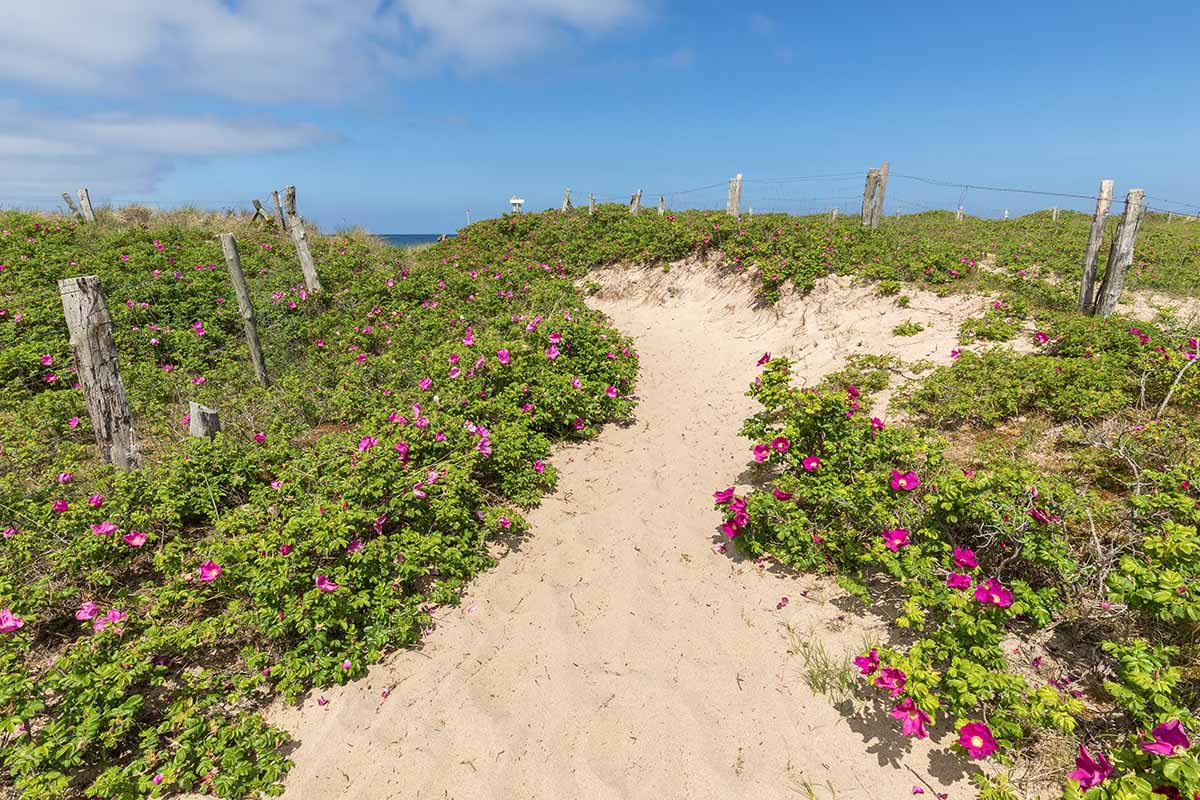
While the hips are pretty distinctive, that’s not the only thing that makes beach tomatoes unique. This plant has dramatically wrinkled, thick, leathery leaves, which is where the specific epithet “rugosa” comes from. Rugosa means wrinkled in Latin.
While the flowers are less dramatic than some of the showier roses like, say, a tea, they persist on the plant from spring until the first frost. The hips stick around from late summer through the winter.
In other words, they offer you a good amount of ornamental excellence for a large portion of the year.
The arching branches can grow up to five feet long and are covered in long prickles and alternate leaves. The solitary flowers are single, with five petals that can be white or pink, and pale or vibrant. Some cultivars have red petals and double flowers.
Cultivation and History
Beach tomatoes were introduced to Europe from Japan in the late 1700s, and they traveled to North America a few decades later. They have done maybe too good of a job in their new home.
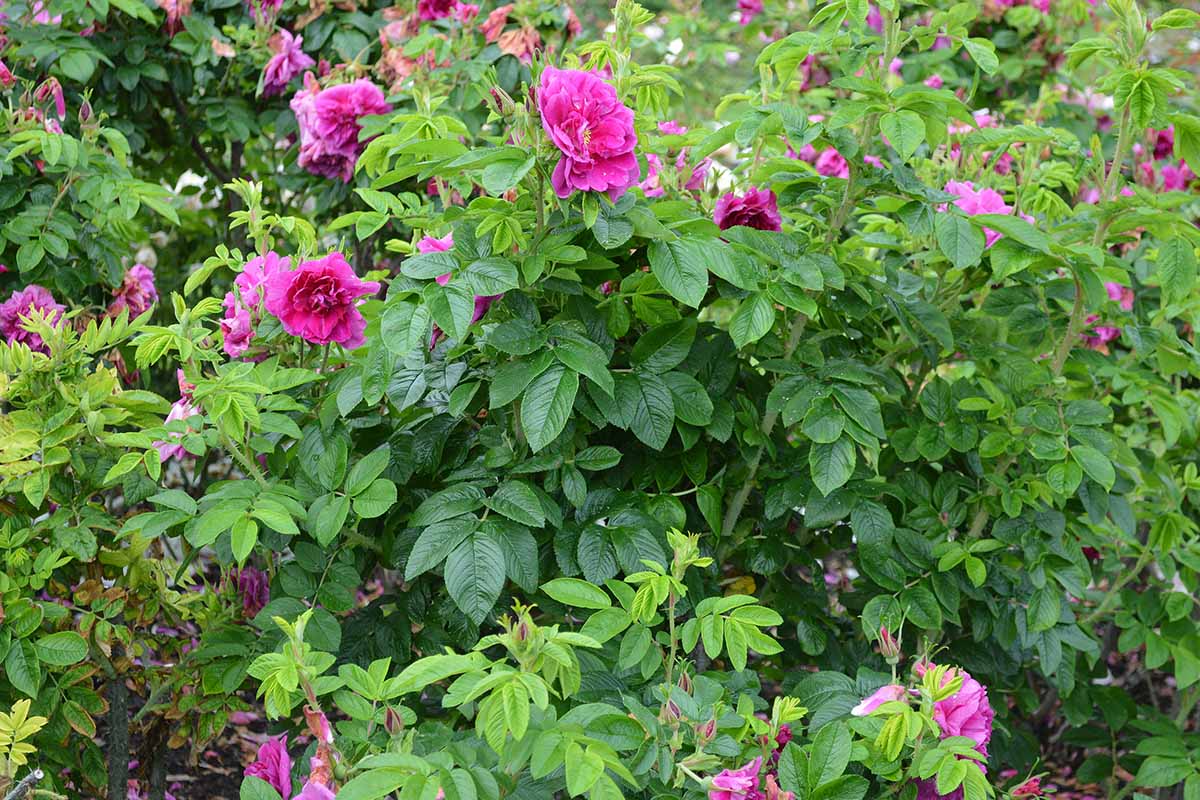
By 1899, the species had naturalized in Massachusetts, and it has become invasive in some places, such as New England.
In some areas, it’s such a common sight that many people don’t realize that it’s not native to North America. Not only does it spread through suckers, but birds carry the seeds far and wide.
Check local regulations to make sure you can legally purchase and plant this species in your neck of the woods.
If you’re afraid the plants will become overly aggressive, take heart. Rugosa roses have been used to make all kinds of hybrids that are a little less enthusiastic in their spreading behavior.
Since this species is naturally disease resistant – especially to black spot and rust, two diseases that often plague rose growers – it’s an excellent option to hybridize with.
Rugosa Rose Propagation
Rugosa roses can be propagated in lots of ways, and all of them may be equally successful. This is one plant that is eager to reward your reproductive efforts.
Cuttings are a common method, and we have guides to walk you through propagating cuttings in water or in soil.
Of course, you can also go the old reliable route of purchasing a plant and putting it in the ground. If you opt to go in that direction, read our guide for some tips on planting.
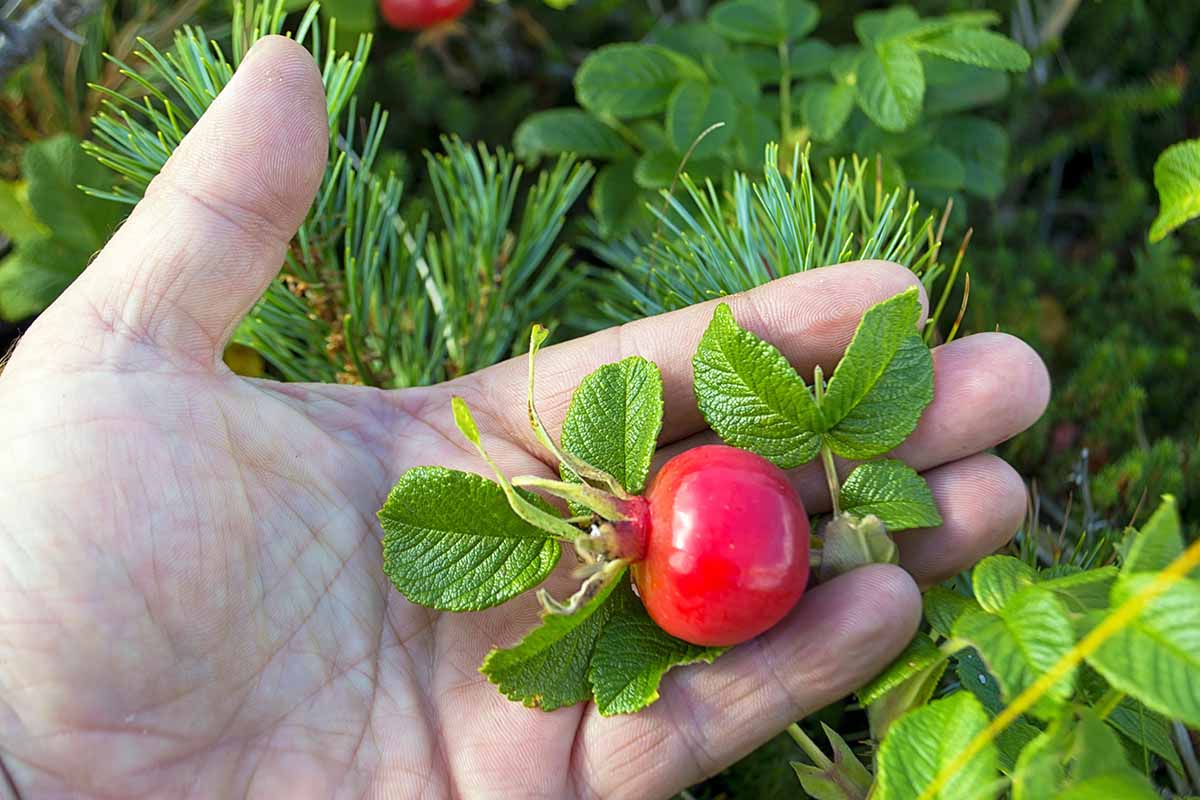
If you’d rather go the seed route, you can harvest and save seeds from the hips or buy some. First, read our guide on how to harvest and save rose seeds, then come back here.
The seeds need to be stratified before you plant them, so place the seeds in moist sand or sphagnum moss in a sealed plastic bag and toss the bag in the refrigerator for 60 days. Check the medium now and then to make sure it stays moist.
Plant the seeds a half-inch deep in four-inch pots filled with a seed-starting medium.
You can use standard plastic pots, of course, but I love CowPots.
These are made out of cow manure, which means they will biodegrade into the soil, and you don’t have to disturb the rose’s roots as much when you plant. Plus, the seedlings get a little nutrient boost from the poop.

If you don’t have some already, you can purchase packages of 12 four-inch pots from Amazon.
Place the pots on a warming mat under grow lights for at least six hours daily. Once the seedlings emerge, move the lights a little further away.
When the seedlings are about four to six inches tall, you can harden them off.
Hardening off involves putting your plant outside in a protected location for an hour or so where it can get used to the sunlight. Then, bring it back inside.
On the following day, take it back outside and leave it out for two hours. Add an hour each day for a week. Now you can plant the seedling in the ground.
Set your plants five feet apart. If you want to know more about how to plant rose bushes, visit our guide.
Some roses need to have their bud union buried to thrive, but that’s not a worry here since we aren’t dealing with grafted plants. Just plant it at the same depth as it was growing originally.
How to Grow Rugosa Roses
Normally, the prep required for a rose can be, shall we say, involved. Growers do their best to make the soil absolutely perfect for their new plant. But you can be far more relaxed if you plant this species.
It will thrive in sandy, clay, gravelly, chalky, or loamy soil. Unless your soil seems more like concrete or quicksand, don’t worry too much sound trying to make it perfect.

It never hurts to work in some well-rotted compost or manure though. And well-draining soil is best.
While the rugosa rose is adaptable enough to survive in partial shade, give it full sun for the best flowering. Just don’t plant one near your walkways or home entrances.
Many roses will reach out and grab you as you walk by, but especially beach tomatoes. They have lots of canes, and those canes are covered in lots of long prickles.
These plants will be fine even with a bit too much water or through a short period of drought, but try to keep the soil consistently moist. You don’t want to push it, so if you can stick your finger in the soil and it feels dry, grab the ol’ hose.
Or, if you’re in the market for a new one, check out our roundup of the best garden hose options.
There’s no need to fertilize these plants unless you’ve tested your soil and you know it’s deficient in something.
If you’re already feeding the rest of your garden, feel free to toss them a little mild, balanced fertilizer. It won’t hurt anything, so long as you only do it once or twice a year, but don’t overfeed them.
Growing Tips
- Work some well-rotted compost or manure into the soil before planting
- Plant in full sun
- Keep the soil consistently moist
Pruning and Maintenance
Rugosas spread via suckers, so if you want to contain them, you’ll need to stay on top of removing these. The plant will form a dense thicket if left to its own devices. That’s great if you want a nice hedge or natural fence, not so great if you want a specimen.
Dig up or cut down any suckers to the ground when you see them.
Don’t deadhead the spent flowers. This species will continue flowering without any help from you, and if you deadhead them, you’ll take off the hips and deprive yourself of the beautiful winter color they offer.
Prune to create a nice shape. You don’t need to prune these as carefully as you would standard shrub roses. Just trim them back to a leaf node to encourage branching and to keep the plants from growing too large.
Rugosa Rose Cultivars to Select
There are many, many hybrids bred from beach roses because they’re so resistant to problems and they can handle such a huge range of conditions.
Combining a little of their good stuff with types that are a bit more delicate can create an exceptional shrub.
But if you want the original, there are some fantastic cultivars that look just as showy as your average tea rose. Here are just a few standouts:
Alba Plena
If you want something that looks a lot like the original wild species, ‘Alba Plena’ is an excellent variety.
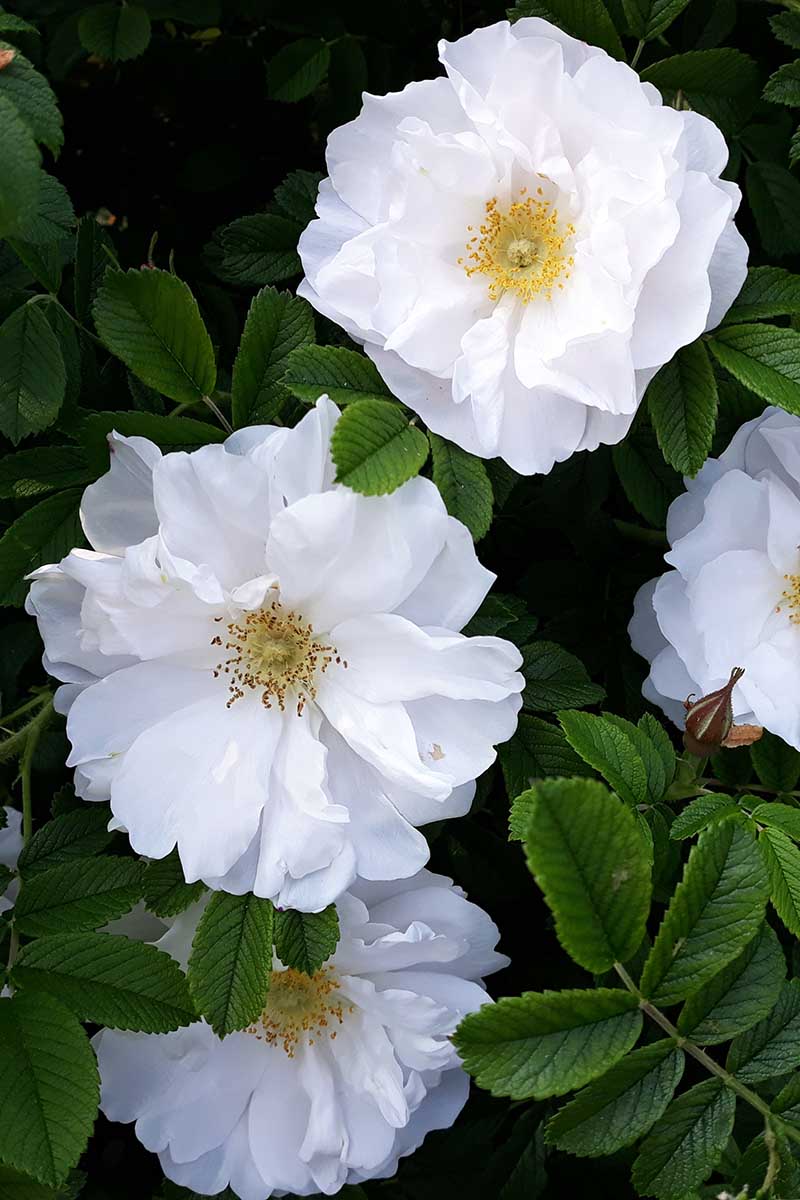
But there’s nothing plain about this rose. It’s more floriferous than the species, with double, pure white flowers rather than the typical single blooms. And they grow in big groups, adding to the impact.
The flowers are fragrant and the plant can survive as far north as Zone 2b.
Bayse’s Purple
If you want a hardy plant that can withstand the cold in Zone 3, check out ‘Bayse’s Purple.’
Bred by hobbyist Dr. Robert E. Bayse in Texas, he aimed to create tough, disease-resistant roses, and he found success with this hybrid.
The cherry reddish-purple blossoms are semi-double and strongly fragrant with a hint of clove. This is a prolific bloomer with a vigorous growth habit.
Hansa
One of the drawbacks of rugosas is that the blossoms can be a little less interesting than some of the frilly, double flowers you’ll find on other species. Not ‘Hansa,’ though.
The double blossoms are deep, bold fuchsia, and they stick around all summer long. A feast for the senses, the flowers are also intensely fragrant with a bold, spicy scent. Reach out and touch them: they’re velvety soft.
This cultivar will grow six feet tall and wide at maturity, so if you have the right spot, snag yourself one in a #3 container at Nature Hills Nursery. It’s recommended for Zone 3b and warmer.
Rugelda
‘Rugelda’ is a hybrid cross between ‘Bonanza’ and ‘Robusta’ bred by noted rose breeder W. Kordes & Sons in Germany.
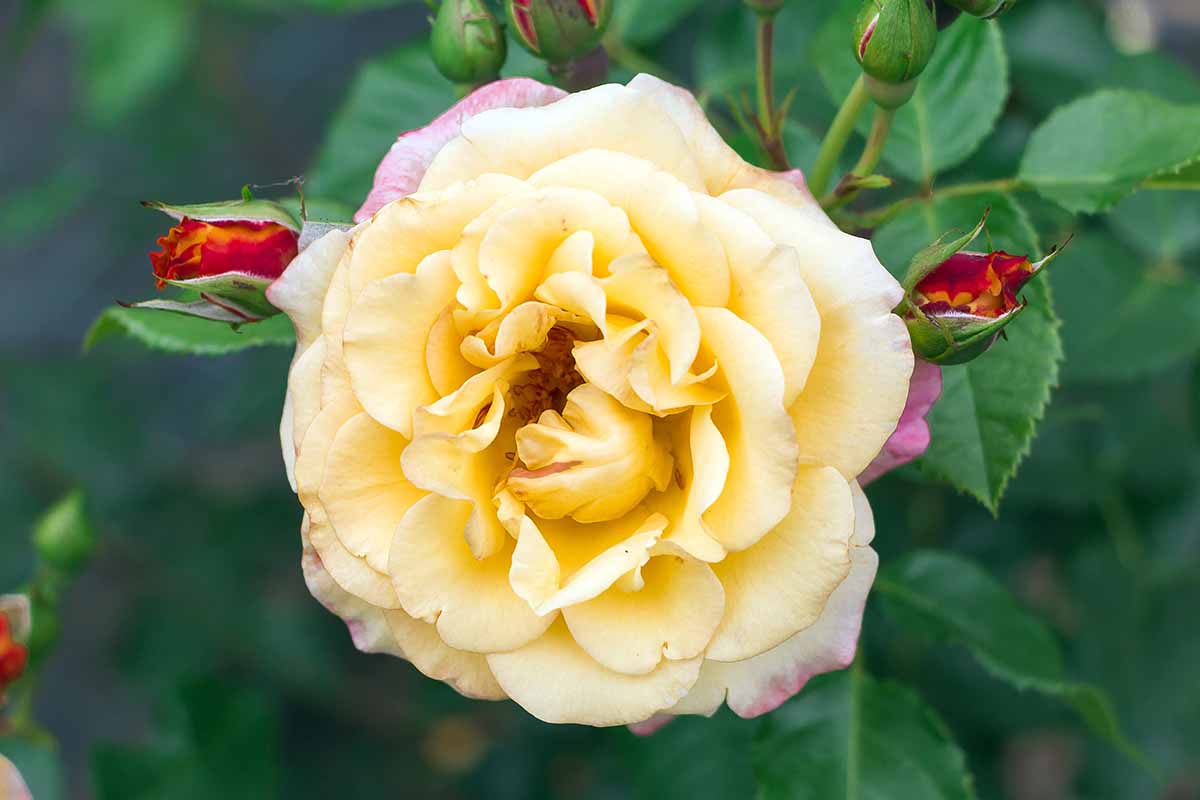
It’s a stunning, clear yellow with pink along the edges. The small flowers are double and mildly fragrant. Plant it in Zones 5 and up.
Therese Bugnet
One of the prettiest rugosa hybrids out there, ‘Therese Bugnet’ is a stunner.
It was bred by Georges Bugnet of Alberta, Canada. He was known for using native and wild roses in his breeding program to create some extremely tough plants.
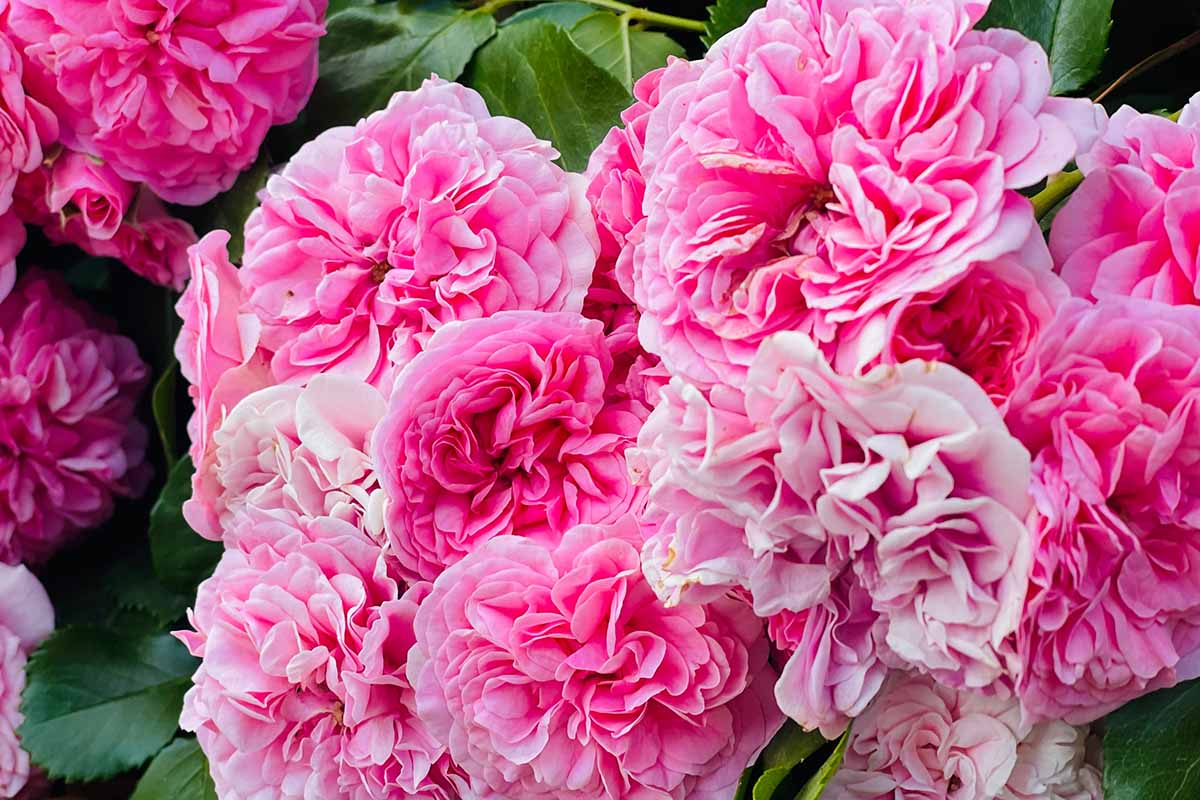
But you’d never know that this pretty lady is hiding a tough interior.
The large, fully double, fragrant pink blossoms look as attractive as the most elegant damask. This cultivar is hardy down to Zone 5.
Managing Pests and Disease
If you water at the soil level, keep the plants appropriately pruned so they have good air circulation, and don’t overwater, it’s unlikely you’ll experience pest or disease problems.
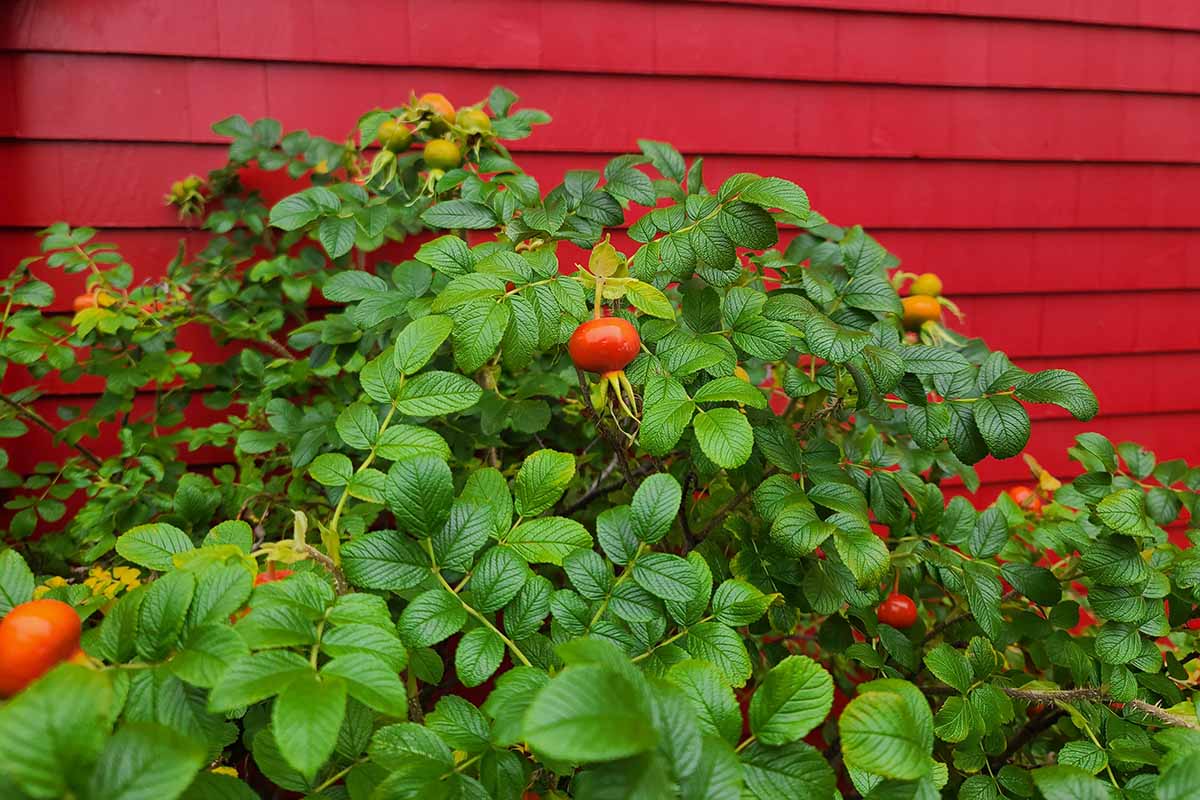
Some roses are devoured by herbivores, but the prickles on this species keep deer and rabbits away. I can hardly blame them. Those prickles can be vicious!
Rugosas are resistant to most diseases, though you may want to familiarize yourself with the list of common diseases just in case yours comes down with something.
Crowded plants growing in wet areas are more likely to have issues like rust and powdery mildew.
Pests have a harder time feeding on the thick, tough leaves, but keep an eye out for aphids and scale.
Best Uses for Rugosa Rose Bushes
As with all roses, you can grow these as specimens in your garden. The less aggressive hybrids and cultivars work best for this purpose.
Otherwise, use them as a hedge, living fence, or screen. They’re also useful in areas that need some erosion control.
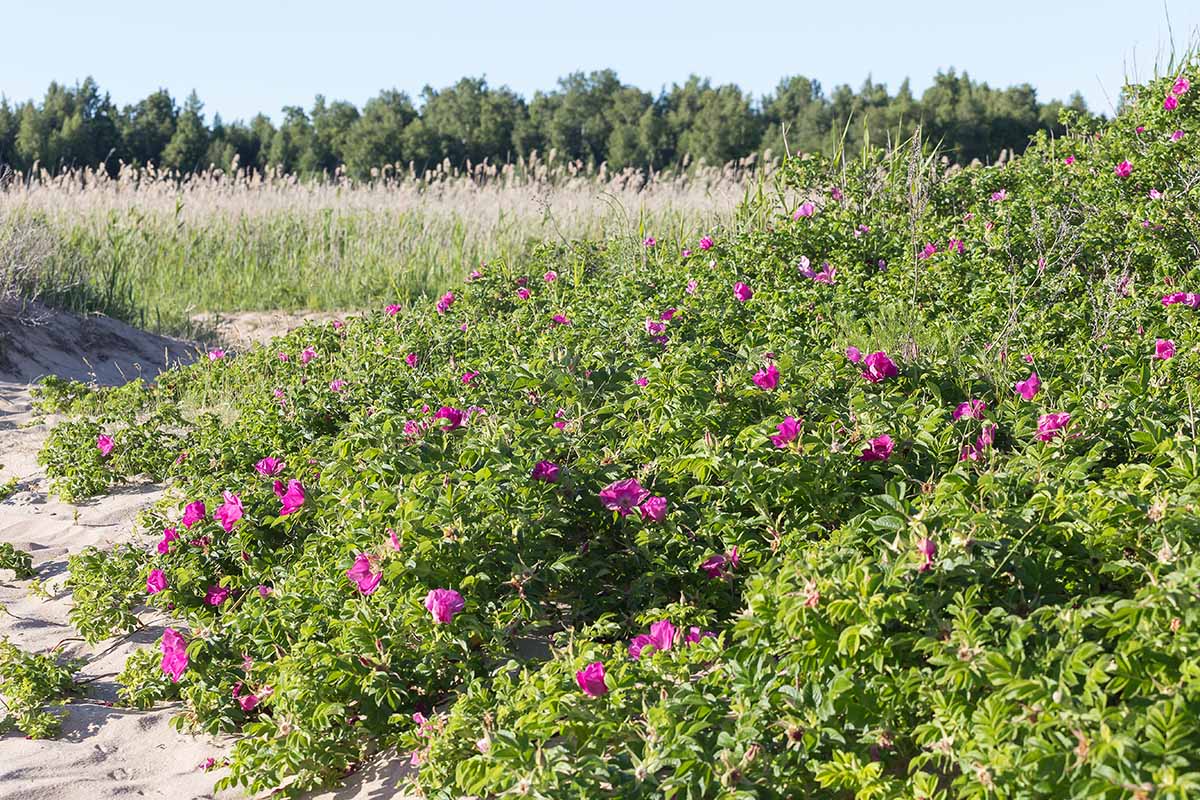
Remember how I promised to discuss the hips? Here we go!
These plants have arguably the best hips if you want to use them for food, cosmetics, home goods, or medicine. They’re some of the best for ornamental uses, too.
The hips are huge and somewhat juicy, whereas most species have mealy, small hips. They’re also tart, like other species, but they have more fruity sweetness than any others I’ve tasted.
As much as I love foraging and using rose hips, I have to admit that some of them don’t taste all that great unless you doctor them up with some sugar or something. These taste delicious all on their own, sort of like a tart apple – they’re related, after all.
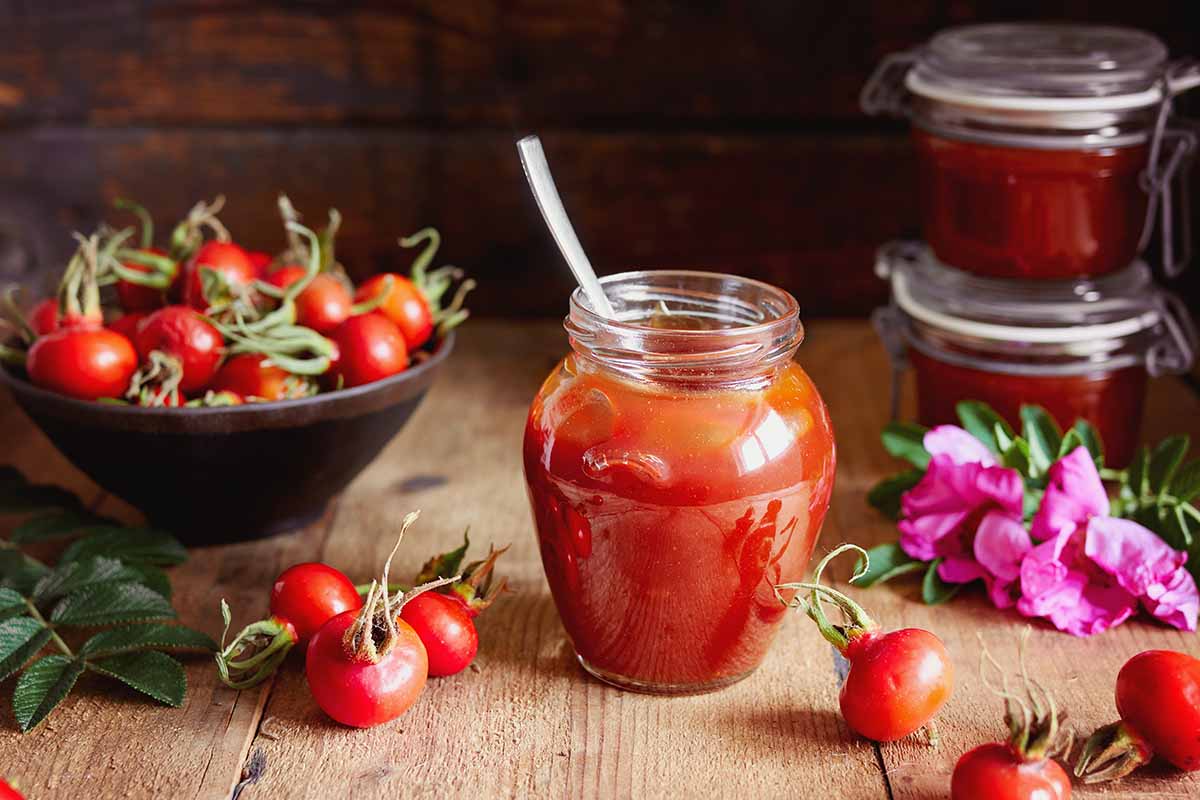
Like all fruits in the Rosaceae family, the seeds contain compounds known as cyanogenic glycosides. These produce toxic hydrogen cyanide that can make you pretty sick if you eat enough, so don’t eat too many of the seeds themselves.
They’re tough and bitter anyway, so I’m not sure why you’d want to. If you happen to crunch on a few, you don’t need to stress. You’d have to eat a lot to become ill.
Because the hips are so large, you can pick out the seeds fairly easily. If you don’t feel like doing the work, just boil the hips to separate the flesh from the seeds.
Quick Reference Growing Guide
| Plant Type: | Woody perennial shrub | Flower / Foliage Color: | White, pink, red/green |
| Native to: | Eastern Asia | Water Needs: | Moderate |
| Hardiness (USDA Zone): | 2-7 | Maintenance: | Moderate |
| Bloom Time/Season: | Spring, summer, fall (flowers)/winter (hips) | Soil Type: | Sandy to clay |
| Exposure: | Full sun | Soil pH: | 5.0-7.0 |
| Spacing: | 5 feet | Soil Drainage: | Well-draining |
| Planting Depth: | 1/2 inch (seeds), same depth as container (transplants) | Attracts: | Bees, butterflies |
| Growth Rate: | Fast | Uses: | Border, cottage garden, edible, erosion control, hedge, living fence, specimen |
| Time to Maturity: | 5 years | Order: | Rosales |
| Height: | 6 feet | Family: | Rosaceae |
| Spread: | 20 feet | Genus: | Rosa |
| Common Pests and Disease: | Aphids, powdery mildew; rust, scale | Species: | Rugosa |
Pretty on the Outside, Tough as Nails Inside
If you have a friend that longs to grow roses but doesn’t want to deal with some of the disease challenges, point them to rugosas.
Their status as tough plants that are tolerant of cold is absolutely legendary.
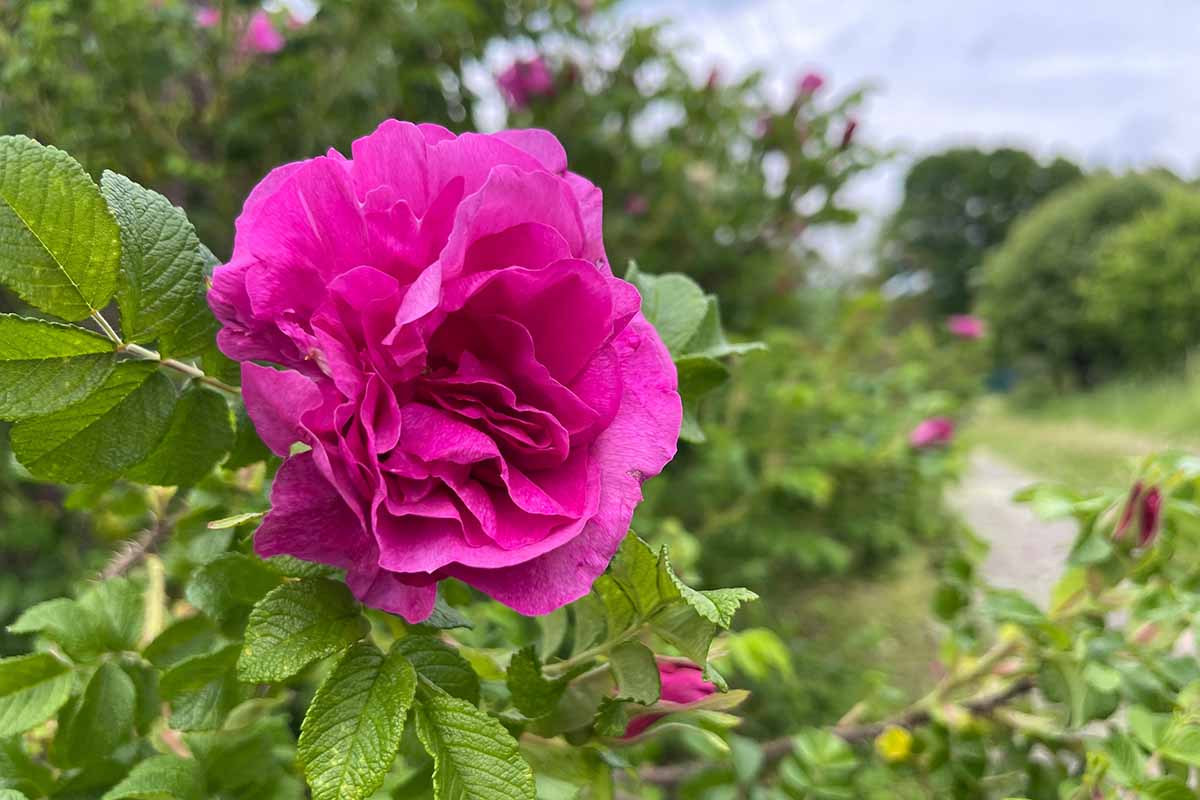
Are you turning to rugosas because you’ve given up on the more delicate types? Or are you planning to harvest the hips? Just want to try something new? Let us know in the comments.
If you’re looking for more ways to nurture your rose garden, we have lots of guides that you might find helpful. Here are just a few:
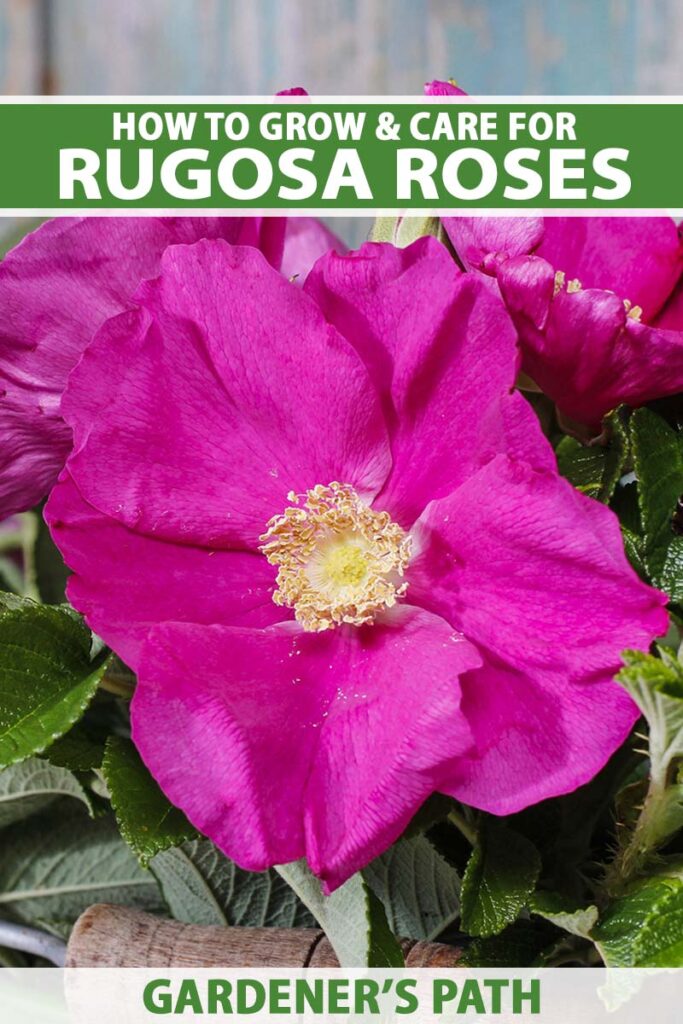




Hello! This article is so true and a beautiful representation of this rose! I live in Maine and these beautiful extremely fragrant rose is very invasive! I decided 3 years ago I wanted a no mow yard and I have one! I planted pink and white alternatively all around my house. Thanks for some of this info, I now make rose hip preserves! If you love roses, grow these! The benefits are outstanding and maintaining is minimal! TY for sharing!